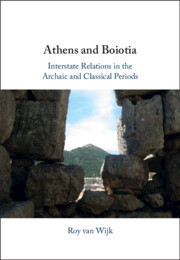Refine search
Actions for selected content:
65 results
Chapter 12 - Creole Patriotism and the Colonial Archive
- from Part III - Transgressing
-
-
- Book:
- Latinx Literature in Transition, 1444–1886
- Published online:
- 06 August 2025
- Print publication:
- 17 July 2025, pp 271-292
-
- Chapter
- Export citation
Chapter 4 - The Mid Nineteenth-Century Press and Periodical Poetry
- from Part I - Transacting
-
-
- Book:
- Latinx Literature in Transition, 1444–1886
- Published online:
- 06 August 2025
- Print publication:
- 17 July 2025, pp 106-124
-
- Chapter
- Export citation
Evading and inviting states in ‘No-Man’s-Lands’: Headhunters in Zomia’s blank spaces (1944–1964)
-
- Journal:
- Modern Asian Studies , First View
- Published online by Cambridge University Press:
- 10 July 2025, pp. 1-29
-
- Article
-
- You have access
- Open access
- HTML
- Export citation
Border Memory and the Politics of Territoriality in the Russian-Finnish Borderland
-
- Journal:
- Nationalities Papers , FirstView
- Published online by Cambridge University Press:
- 24 June 2025, pp. 1-25
-
- Article
-
- You have access
- Open access
- HTML
- Export citation
18 - Imperial Edges and Those Who Live There
- from Part III - Frames and Actors
-
-
- Book:
- The Cambridge Companion to Ottoman History
- Published online:
- 31 May 2025
- Print publication:
- 20 March 2025, pp 253-265
-
- Chapter
- Export citation
The Sick Vines of Europe: Raisins, Phylloxera, and the Politics of Place in the Late Ottoman Aegean
-
- Journal:
- Comparative Studies in Society and History / Volume 67 / Issue 2 / April 2025
- Published online by Cambridge University Press:
- 23 January 2025, pp. 349-376
-
- Article
-
- You have access
- Open access
- HTML
- Export citation
5 - Magendo
-
- Book:
- Money, Value, and the State
- Published online:
- 05 December 2024
- Print publication:
- 12 December 2024, pp 263-303
-
- Chapter
- Export citation
Chapter 12 - Traces of Han and Roman Frontiers
- from Part IV - Fringe Places and Endpoints
-
-
- Book:
- Place and Performance in Ancient Greece, Rome, and China
- Published online:
- 28 November 2024
- Print publication:
- 05 December 2024, pp 378-409
-
- Chapter
- Export citation
Unlikely Allies: Lao Insurgent Perspectives of Armed Group Transnational Collaboration in the Emerald Triangle Region during the Third Indochina War
-
- Journal:
- TRaNS: Trans-Regional and -National Studies of Southeast Asia / Volume 13 / Issue 1 / May 2025
- Published online by Cambridge University Press:
- 26 November 2024, pp. 19-39
-
- Article
-
- You have access
- Open access
- HTML
- Export citation
3 - Cooperation in Homogeneous and Heterogeneous Polish Villages
- from Part II - Social Cohesion and Public Goods
-
- Book:
- Uprooted
- Published online:
- 07 November 2024
- Print publication:
- 21 November 2024, pp 65-88
-
- Chapter
- Export citation
2 - Europe’s Zero Hour: Population Transfers in the Aftermath of WWII
- from Part I - Introduction
-
- Book:
- Uprooted
- Published online:
- 07 November 2024
- Print publication:
- 21 November 2024, pp 31-62
-
- Chapter
- Export citation
2 - Major’s Life and Setting
- from Part I - Introduction
-
- Book:
- Curating the Enlightenment
- Published online:
- 07 December 2024
- Print publication:
- 07 November 2024, pp 29-60
-
- Chapter
- Export citation
Holy Infrastructures: Catholicism, Detroit Borderlands, and the Elements
-
- Journal:
- Comparative Studies in Society and History / Volume 66 / Issue 4 / October 2024
- Published online by Cambridge University Press:
- 14 August 2024, pp. 786-813
-
- Article
-
- You have access
- Open access
- HTML
- Export citation
14 - “Country Snarled / in Borders”
- from Part IV - Embodied Poetics
-
-
- Book:
- The Cambridge Companion to Australian Poetry
- Published online:
- 06 June 2024
- Print publication:
- 13 June 2024, pp 236-251
-
- Chapter
- Export citation
4 - Indigenous Equestrianism
-
- Book:
- Feral Empire
- Published online:
- 30 May 2024
- Print publication:
- 06 June 2024, pp 107-142
-
- Chapter
- Export citation
The Paris System in Western Europe: Minorities, Self-Determination, and the Management of Difference in the “Civilized West”
-
- Journal:
- Nationalities Papers / Volume 53 / Issue 3 / May 2025
- Published online by Cambridge University Press:
- 27 May 2024, pp. 533-553
-
- Article
-
- You have access
- Open access
- HTML
- Export citation
Chapter 7 - Latinx Belonging in New World Borders
-
-
- Book:
- The Cambridge Companion to American Utopian Literature and Culture since 1945
- Published online:
- 09 May 2024
- Print publication:
- 16 May 2024, pp 133-151
-
- Chapter
- Export citation
2 - Exile and Opportunity
-
-
- Book:
- Mobility and Coercion in an Age of Wars and Revolutions
- Published online:
- 09 May 2024
- Print publication:
- 16 May 2024, pp 28-57
-
- Chapter
-
- You have access
- Open access
- HTML
- Export citation

Athens and Boiotia
- Interstate Relations in the Archaic and Classical Periods
-
- Published online:
- 29 February 2024
- Print publication:
- 25 January 2024
-
- Book
-
- You have access
- Open access
- Export citation
4 - Do Fences Make for Better Neighbours?
-
- Book:
- Athens and Boiotia
- Published online:
- 29 February 2024
- Print publication:
- 25 January 2024, pp 172-278
-
- Chapter
-
- You have access
- Open access
- HTML
- Export citation
